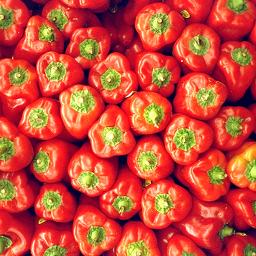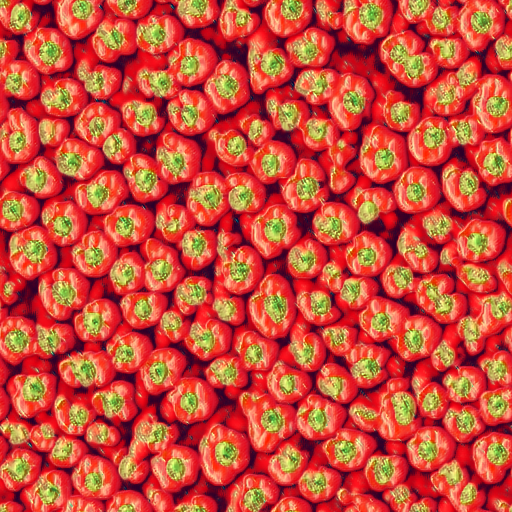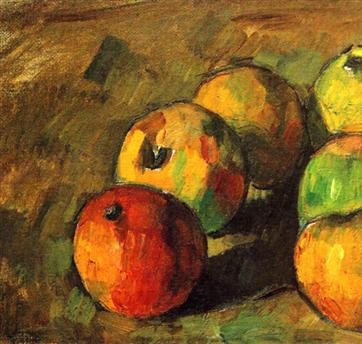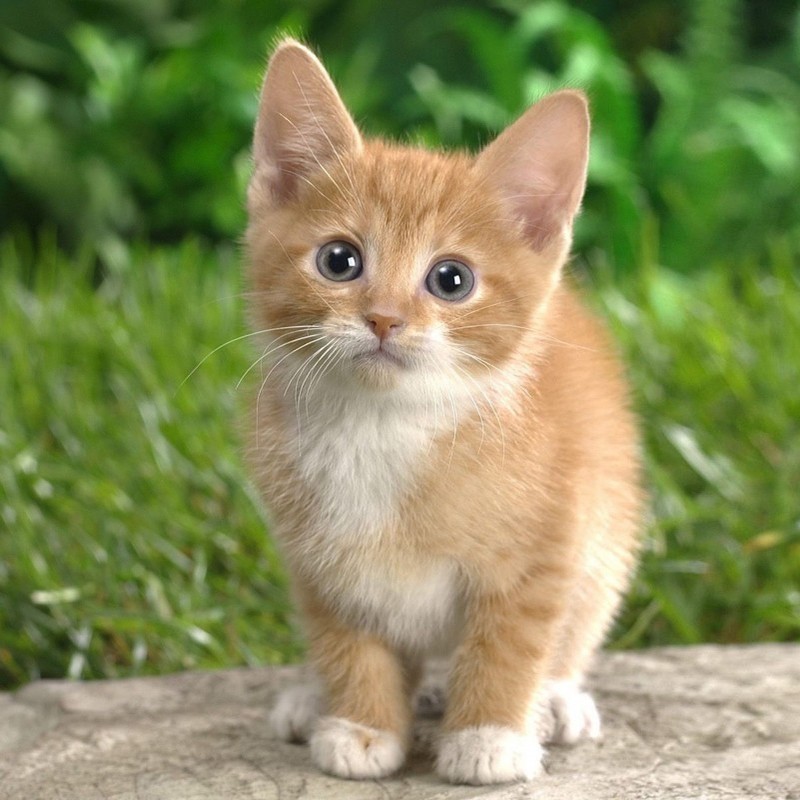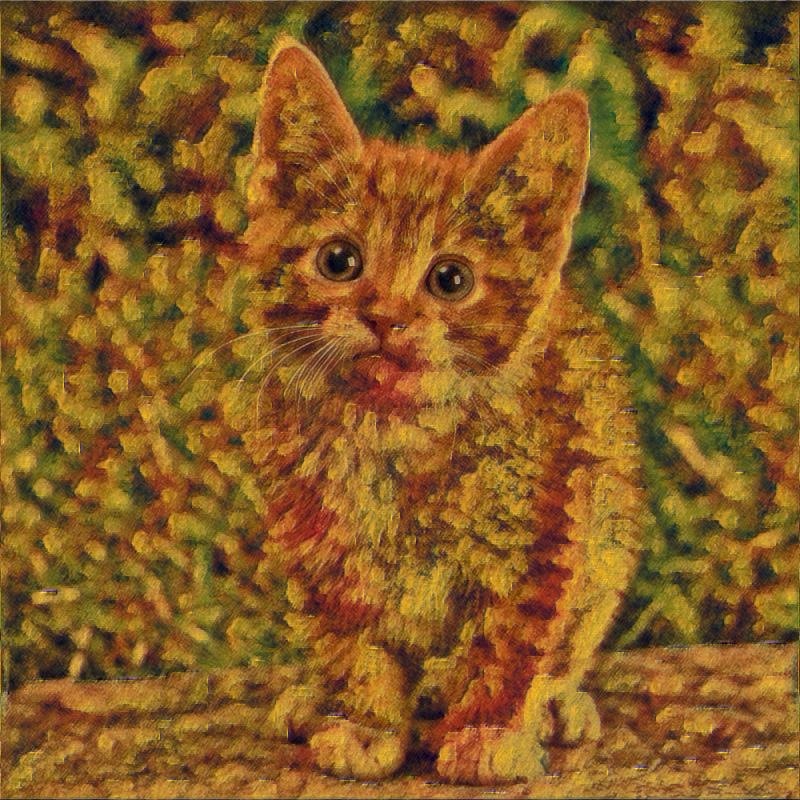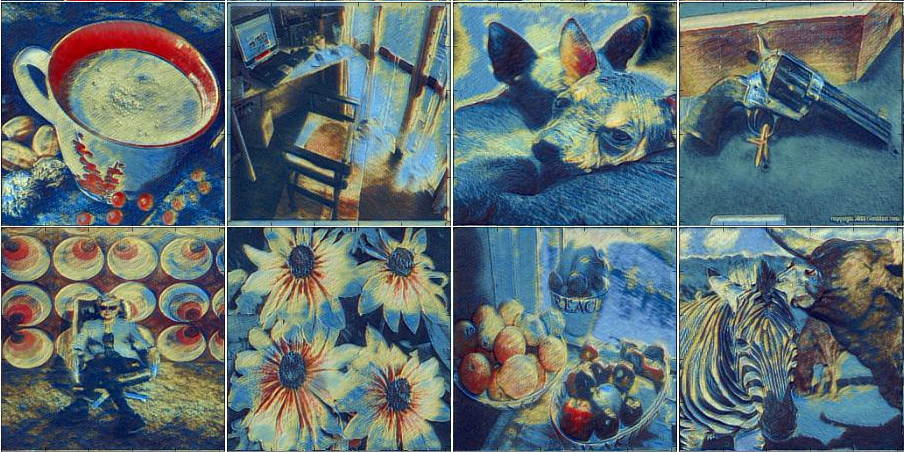The code for Instance normalization note will be uploaded soon.
In our paper we describe a faster way to generate textures and stylize images. It requires learning a feedforward generator with a loss function proposed by Gatys et. al. which takes in our experiments about an hour or two. When the model is trained, a texture sample of any size can be generated instantly.
You can find two iTorch notebooks as well as 8 pretrained models in supplementary directory. You need a GPU (nn.SpatialBatchNormalization throws a error in CPU mode due to my mistake), torch, and iTorch installed to try them.
Pretrained models in supplementary directory should be run with notebooks and are not compatible with other code.
- torch
- cunn
- torch.cudnn (optionally)
- display (optionally)
Download VGG-19.
cd data/pretrained && bash download_models.sh && cd ../..
This command should train a generator close to what is presented in the paper. It is tricky, the variance in the results is rather high, many things lead to degrading (even optimizing for too long time).
th texture_train.lua -texture data/textures/red-peppers256.o.jpg -model_name pyramid -backend cudnn -num_iterations 1500 -vgg_no_pad true -normalize_gradients true -batch_size 15
The generator will fit the texture
And here is a sample of size 512x512 after learning for 700 iterations:
You may also explore other models. We found pyramid2 requires bigger learning rate of about 5e-1. To prevent degrading noise dimensionality should be increased: noise_depth 16. It also converges slower.
This works good for me:
th texture_train.lua -texture data/textures/red-peppers256.o.jpg -gpu 0 -model_name pyramid2 -backend cudnn -num_iterations 1500 -vgg_no_pad true -normalize_gradients true -learning_rate 5e-1 -noise_depth 16
vgg_no_padcorresponds to padding option used in VGG. If set, padding mode =valid.
The samples and loss plot will appear at display web interface.
A sample from above can be obtained with
th texture_sample.lua -model data/out/model.t7 -noise_depth 3 -sample_size 512
noise_depth should correspond to noise_depth used when training.
We used ILSVRC2012 validation set to train a generator. One pass through the data was more than enough for the model described in the paper.
Extract content from relu4_2 layer.
th scripts/extract4_2.lua -images_path <path/ILSVRC2012>
Use this command to learn a generator to stylize like in the next example.
th stylization_train.lua -style_image data/textures/cezanne.jpg -train_hdf5 <path/to/generated/hdf5> -noise_depth 3 -model_name pyramid -normalize_gradients true -train_images_path <path/to/ILSVRC2012> -content_weight 0.8
Stylize an image.
th stylization_process.lua -model data/out/model.t7 -input_image data/readme_pics/kitty.jpg -noise_depth 3
Again, noise_depth should be consistent with training setting.
We were not able to archive similar results to original parer of L. Gatys on artistic style, which is partially explained by balance problem (read the paper for the details). Yet, while not transferring the style exactly as expected, models produce nice pictures. We tried several hacks to redefine the objective function, which could be more suitable for convolutional parametric generator, none of them worked considerably better, but the results were nice.
For the next pair we used a generator, trained using 16 images only. It is funny, that it did not overfit. Also, in this setting the net does not degrade for much longer time if zero padding is used. Note that, tiger image was not in the train set.
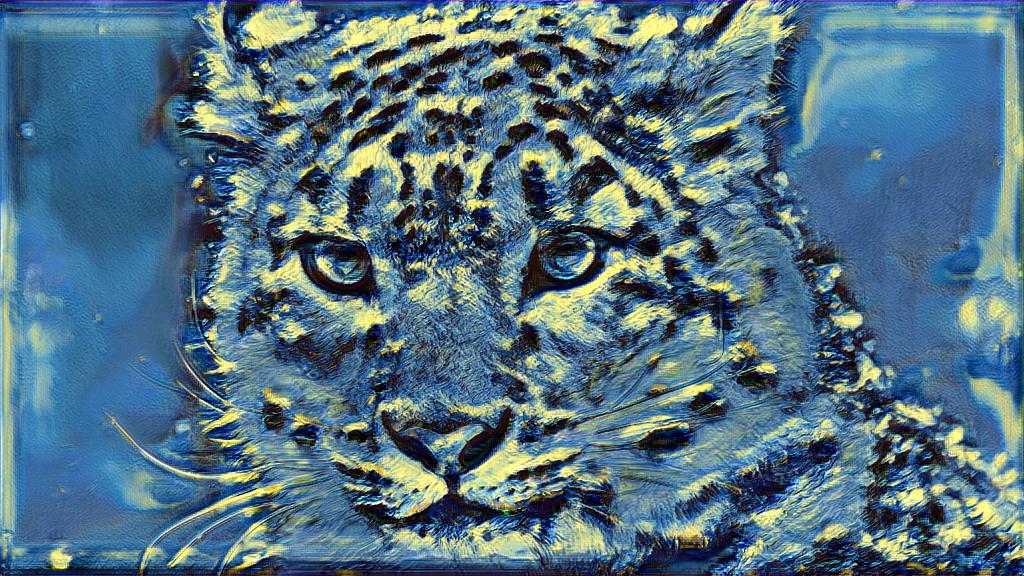 Using "Starry night" by Van Gogh. It takes about quarter of second to process an image at
Using "Starry night" by Van Gogh. It takes about quarter of second to process an image at 1024 x 768 resolution.
In one of the experiments the generator failed to learn Van Gogh, but went very stylish.
This model tried to fit both texture and content losses on a fixed set of 16 images and only content loss on the big number of images.
- The code was tested with 12GB NVIDIA Tesla K40m GPU and Ubuntu 14.04.
- You may decrease
batch_size,image_size,noise_depthif the model do not fit your GPU memory. pyramid2is much more memory efficient thanpyramid, more, you can decrease the number of filters in there.- The pretrained models do not need much memory to sample.
The code is based on Justin Johnson's great code for artistic style.
The work was supported by Yandex and Skoltech.
